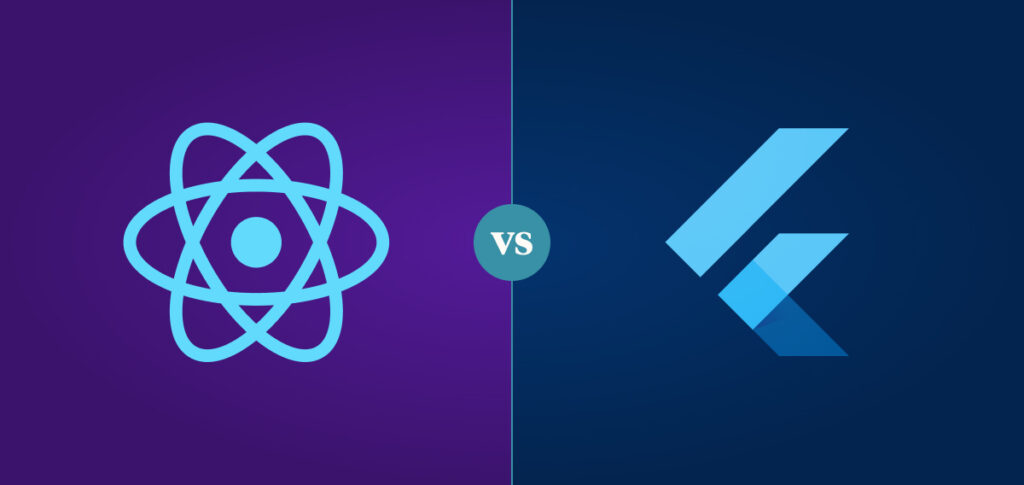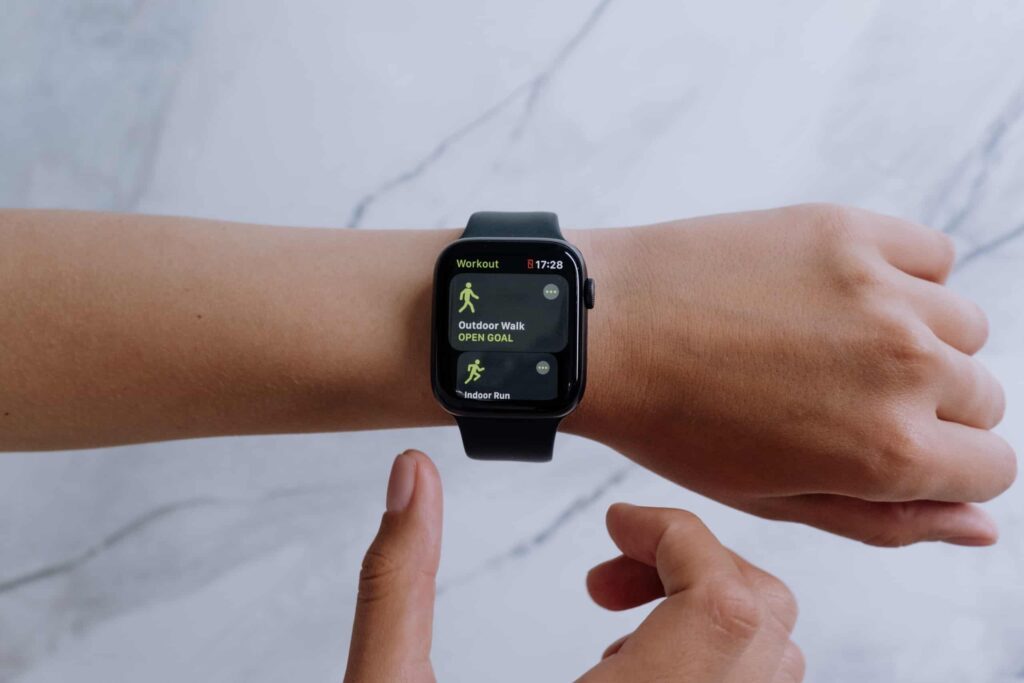One of the most exciting things about technology is that it’s always evolving.
We’re long past Xerox’s experiments with a graphical user interface in the 1970s, and further still from the printed output of the first computers.
It’s amazing to think that 15 years ago, PalmPilots and Blackberries weren’t even able to render images, but as mobile has become the most heavily used platform, much more complicated tasks have become the norm.
As newer trends, such as infinite scrolling and hamburger menus, become contentious, what will replace them?
No need for a crystal ball—we’ve done the research instead. Here are the mobile trends that the top brands will be focused on in 2020:
Increased Usage of Mobile
That’s right—mobile itself is a trend!
For most of the internet’s existence, mobile was something of an afterthought. Many businesses focused on optimizing for visitors who were using a traditional mouse and keyboard.
Today, however, the average American spends 3.6 hours a day on a mobile device, accounting for over half their daily digital media usage.
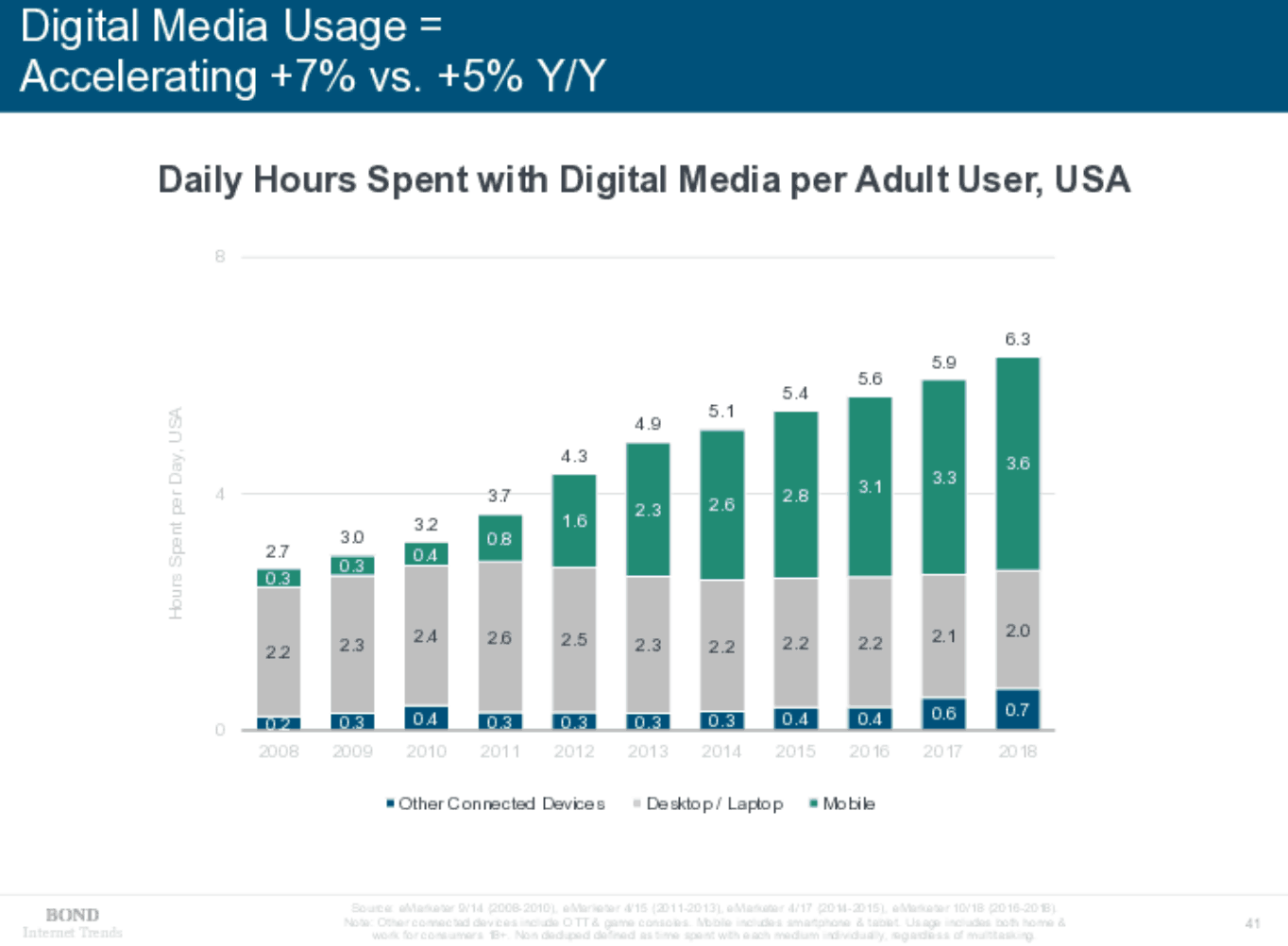
Image Source: Mary Meeker’s 2019 Internet Trends Report
While it’s true that fewer smartphones are being sold than in previous years (though a report from Strategy Analytics still placed global smartphone shipments at 1.43 billion in 2018), the fact is people are using their devices more than ever before.
The True Beginning of 5G in North America
Believe it or not, the fourth generation of broadband cellular network technology started all the way back in 2009. And while mobile networks have made a series of incremental upgrades, the fifth generation will soon be fully upon us.
According to the statistics portal Statista, Ericsson forecasts 11 million 5G smartphone subscriptions by the end of 2019, with an explosion of adoption over the subsequent years. In the graph below, you can see that this adoption starts in Asia-Pacific, creeps into the North American and European markets in 2020, and then becomes a worldwide trend starting in 2021.
5G technology doesn’t just mean faster and more reliable cellphone connections, but anything else that uses a cellular network—such as internet-of-things technologies—will also receive a massive upgrade.
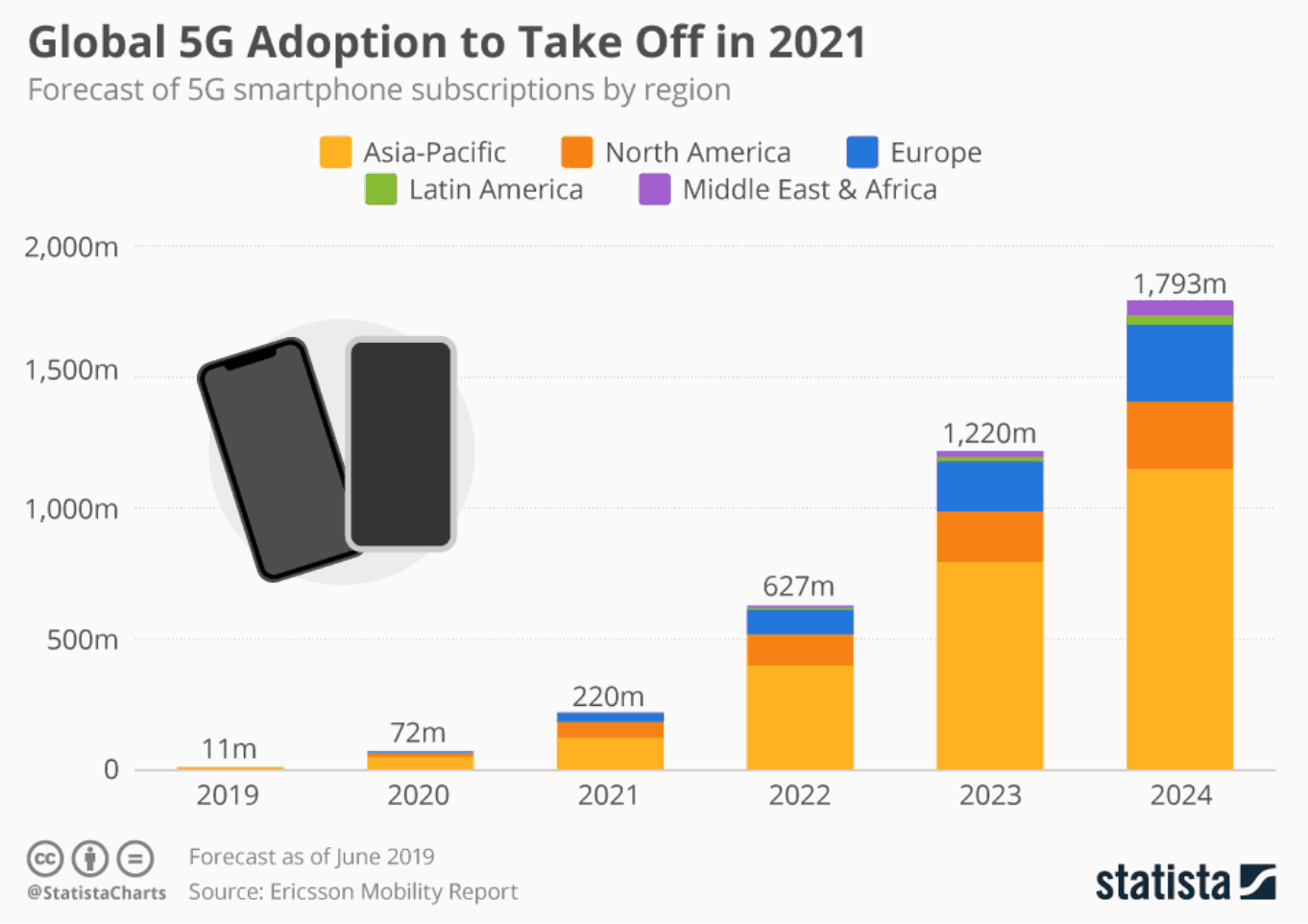
Augmented And Virtual Reality
While we believe we’re still years away from realizing the full potential and capabilities of augmented and virtual reality, more and more brands are using these technologies to do really clever and novel things.
Google recently brought augmented reality to their search results, allowing users to view and place certain 3D objects into the space around them. And they’re lending their technology to organizations such as NASA, Volvo and New Balance.
(We recommend you briefly pause your reading and run a Google search on your mobile device, because there’s something amazing about interacting with a great white shark right in front of you.)
ARe you seeing this?! With new AR features in Search rolling out later this month, you can place, view and interact with 3D objects right in your own space. #io19 pic.twitter.com/Q61U0r2Hvg
— Google (@Google) May 7, 2019
This is just a single example from among the dozens of brands that have stepped up their game, but it showcases how incredibly bright the future of augmented and virtual reality is.
The Rise Of mHealth
Digital health – specifically that driven by mobile (mhealth) – is one major trend that is steadily impacting the lives of millions of people, and we’re here for it!
There are currently over 318,000 health apps on the market, with hundreds more being added each day. What’s driving this growth is consumers—they’re quick to adapt! From telemedicine to wearables and everything in between, people love the convenience of managing their health on the go.
In fact, according to Mary Meeker’s 2019 Internet Trends report, 52 million people in the U.S. now sport wearables, a number that has doubled in just four years. Fitbit, Garmin, Apple Watch—despite debuting years ago, these products have continued to thrive.
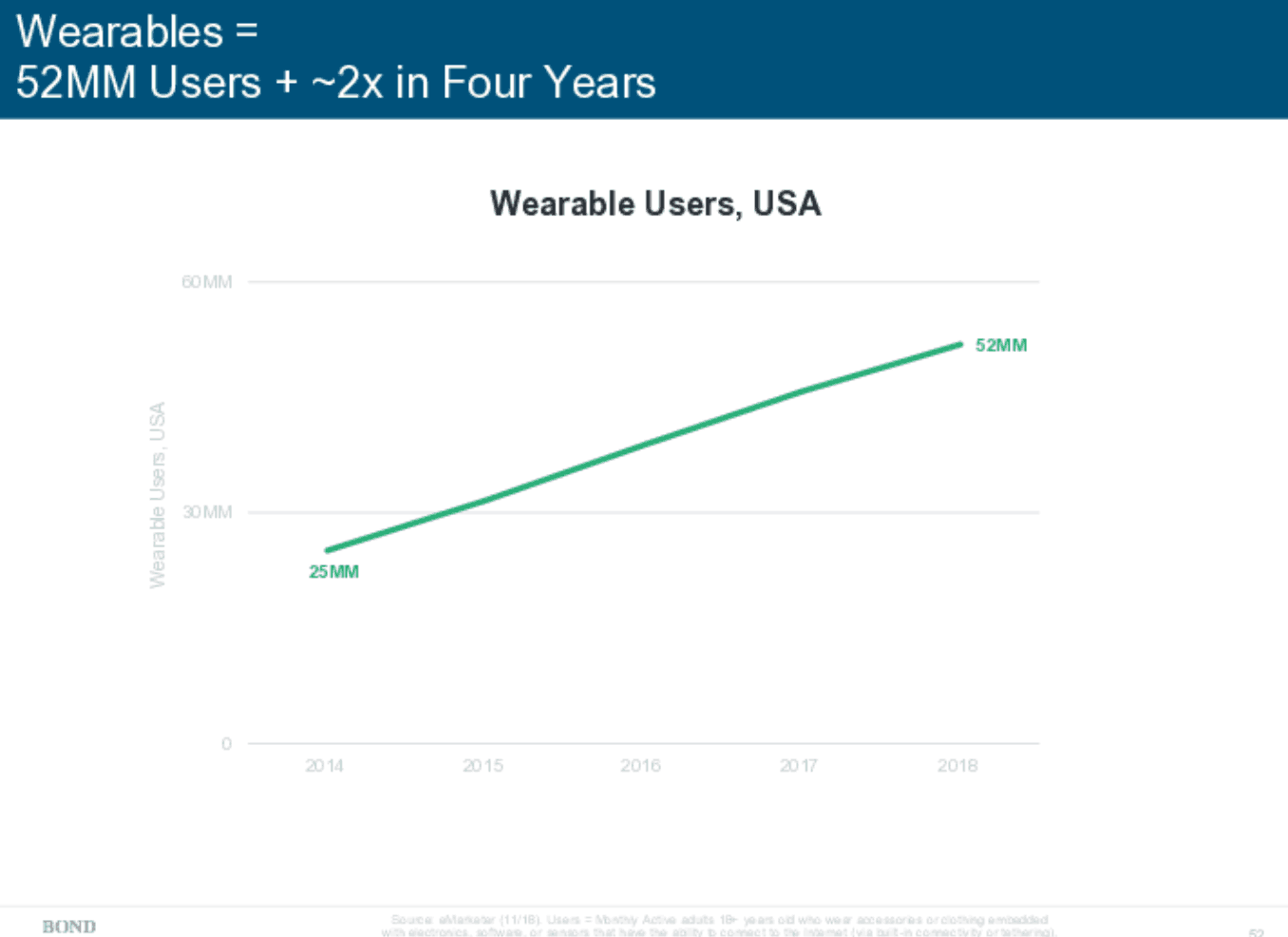
Image Source: Mary Meeker’s 2019 Internet Trends Report
As important as making money is for a business, perhaps more important is doing good. Apple CEO Tim Cook was recently quoted as saying, “If you zoom out into the future and you look back, and you ask the question, ‘What was Apple’s greatest contribution to mankind?’ it will be about health.”
And with the mHealth market estimated to be valued at $31 billion by the end of 2020, this is a trend that will be around for a while—and one you don’t want to miss.
Bold Colours And Gradients
When Instagram made its app icon bolder and more stylized in 2016, many users were up in arms, decrying the new direction as too generic and less appealing.
However, in the years since, many brands have joined Instagram in embracing bold colours and contrasting gradients in their mobile designs.
Modern design is awash with strong purples, reds and oranges—just take a look at the app icons of Airbnb, Tinder and Life360.
Even websites, like The Outline, and other organizations – like Eurosport in their coverage of the 2018 Pyeongchang Olympics – have adopted this trend.

Design trends ebb and flow, and while there will always be a need for subtlety, mobile brands are adopting more vibrant colours in order to stand out.
Wrapping It Up
As technology changes, the world changes. Sixty years ago, no one would have imagined that a machine the size of several rooms would one day fit into our pockets, and that our connection to that machine would define many aspects of our lives.
As we approach 2020, we’ll see even more widespread usage of these technologies, and a strong adoption of the trends mentioned above. What other trends will define 2020? How will our relationship to technology change—again? Guess we’ll find out for sure next year.
Whatever happens, we know it’ll be exciting!
Think we missed a key rising mobile trend? Leave a comment below or hit us up on Twitter.


